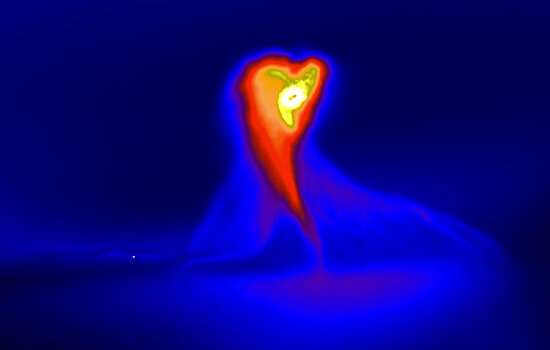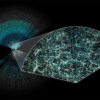An international study led by Monash University astronomers focusing on an infamous star in Orion may help to shed light on how the solar system formed.
In 1936, over the course of the year, a previously unremarkable faint star in Orion, FU Ori, became 250 times brighter.
“FU Ori has remained bright ever since,” said Elisabeth Borchert, the lead author of the study to be published in the Monthly Notices of the Royal Astronomical Society (MNRAS).
A whole class of similar phenomena in young stars have since been discovered, known as FU Orionis events.
“Many explanations have been proposed, but none completely explain the phenomenon,” said Elisabeth, a Ph.D. candidate from the Monash School of Physics and Astronomy.
The research term performed 3D computer simulations of interacting stars. They examined whether a star crashing into the planet-forming disc around another star could explain the sudden change in brightness.
“We show that another star crashing into the surrounding disc of gas and dust results in 250 times change in brightness in one to two years,” said co-author Associate Professor Christophe Pinte, also from the Monash School of Physics and Astronomy.
“The surprise of the study was that the small star is the one that becomes bright, which is nice as in FU Ori the low-mass star is the bright one of the pair,” Elisabeth said.
Additionally, the team were able to study the heating in the planet-forming disc, that occurred as a result of the second star crashing into the disc.
“A mystery in our solar system is that a lot of the dust found in meteorites seems to have been melted rapidly, which could be explained by a similar disturbance to our solar system during its formation,” said study co-author Professor Daniel Price, also from Monash School of Physics and Astronomy.
Citation:
Astronomers find clue to solar system formation through little-known star (2021, December 10)



